The region of Tohoku lies in the northeast of Japan’s main island, Honshu. Like most of the country, Tohoku is hilly or mountainous and is characterised by its beautiful scenery, preserving some of the country’s treasures of history and maintain the rural charm of times gone by. It’s also appreciated for its cuisine, hot springs and its many sports options, especially during the winter months.
From LookOut Pro we propose a trip with seven tips to know the most legendary region of Japan. Do not hesitate, take note!
1. The natural beauty of Yamagata
Mount Hoju-san lies in the northeast of Yamagata and is entirely occupied by the Yamadera Buddhist temple complex, officially known as Risshakuji. It’s one of the most important temples in the region of Tohoku, and also one of the oldest, as it was founded in 860 as a reference centre of the Tendai school.
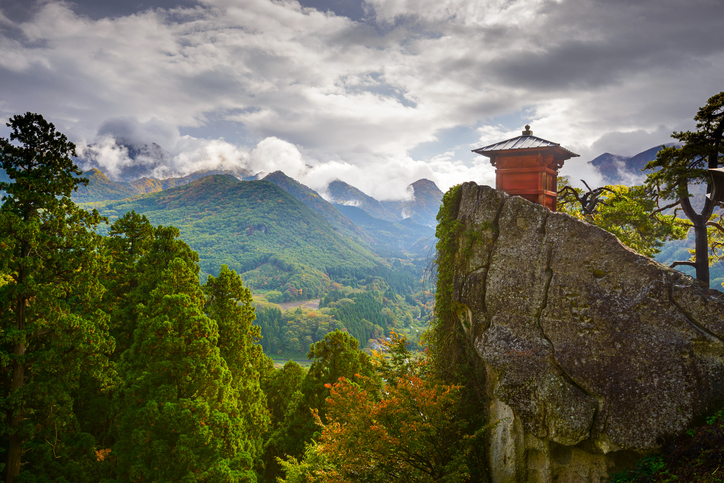 The spectacular scenery is home to several temple building and is also known to have been a source of inspiration for the famous 17th century poet Matsuo Basho, who composed a haiku there about the stillness and silence of the area. Another major attraction of Yamagata Prefecture is the Zao Onsen ski resort, which is well-known for its “Snow Monsters”.
The spectacular scenery is home to several temple building and is also known to have been a source of inspiration for the famous 17th century poet Matsuo Basho, who composed a haiku there about the stillness and silence of the area. Another major attraction of Yamagata Prefecture is the Zao Onsen ski resort, which is well-known for its “Snow Monsters”.
2. Fukushima Samurai Castle
Aizuwakamatsu City and Tsuruga Castle are symbols of the samurai warriors. The fortress is now converted into a museum, and the traditional streets and old samurai houses provide visitors with a thorough understanding of the military elite’s way of life. 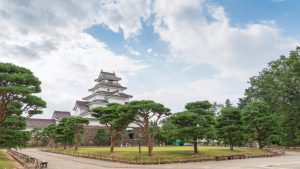
The city is also one of Japan’s biggest producers of sake, an alcoholic drink made from fermented rice and melted snow water from the surrounding mountains. Aizuwakamatsu can be reached from all major cities in Japan by taking the JR Tohoku Shinkansen high-speed train to Koriyama Station and then transferring to the JR Banetsu-sai line that takes you to Aizu-Wakamatsu Station.
3. Sanriku Coast from Miyagi to Aomori
Sanriku Coast is a rocky shoreline along the Pacific Coast that stretches for almost 200km and passes through the Aomori, Iwate and Miyagi prefectures. Kitayamazaki Cliffs has one of the most impressive landscapes in the area, and Jodogahama Beach is also a popular spot for tourists.
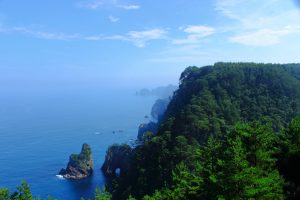
Hachimantai Plateau lies among the prefectures of Iwate and Akita and is part of the Towada-Hachimantai National Park, one the 3 national parks in the Tohoku region. The area consists of volcanoes of different shapes and types that have resulted in mud ponds and steam chimneys. You can also enjoy a relaxing bath in an onsen in many of these places.
4. Miyagi’s 260 islands
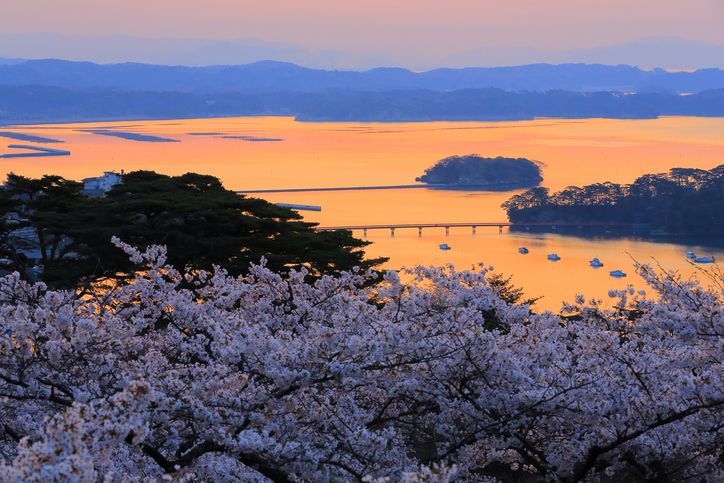
Matsushima Bay in the Miyagi Prefecture is considered to be one of the three most picturesque places in Japan, with 260 small, pine clad islands scattered throughout the bay.
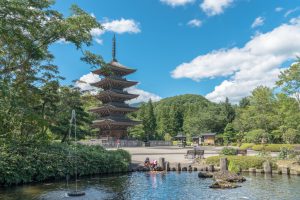 The prefecture is also home to the city of Sendai, the largest and most populous city in the region, which is also known as the ‘City of Trees’, due to the amount of greenery around its main street. You can arrive in Sendai from Tokyo in two hours with the bullet train, and it’s the perfect starting point for a tour around the entire region.
The prefecture is also home to the city of Sendai, the largest and most populous city in the region, which is also known as the ‘City of Trees’, due to the amount of greenery around its main street. You can arrive in Sendai from Tokyo in two hours with the bullet train, and it’s the perfect starting point for a tour around the entire region.
5. Okama Crater Lake in Mount Zao
Mount Zao is another ‘must’ visit and considered one of the greatest jewels of Japanese nature and one of the most beautiful mountains
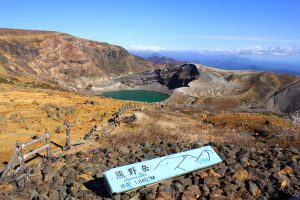
in Japan.
This volcanic mountain chain brings rich vegetation and breathtaking landscapes together with the world-famous hot springs (onsen in Japanese). The 27m deep and 1000m in circumference Okama Crater Lake is just one of the region’s many natural treasures.
6. Hirosaki, a ‘must’ in Aomori
Located in the southwest of Aomori Prefecture, the castle and its surroundings are one of the most interesting places to visit. It’s also a great place to see the cherry trees blossom in spring and the change in the colours of the leaves in autumn.
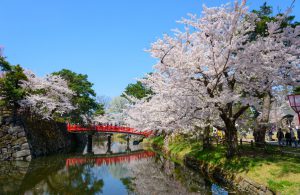
Nonetheless, summer is the perfect time to visit the region and discover first hand Japan’s most traditional residences, the homes of the samurais and different families in the region. Other places of interest to visit in the area are the temples in Kongozan Saisho-in and Kakushu.
7. The Little Kyoto of Tohoku
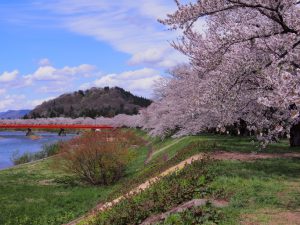
Kakunodate is a quiet town in the Akita Prefecture that’s often referred to as the “Little Kyoto of Tohoku”. Founded in 1620, this small walled town features many well-preserved samurai houses, some of which are more than 350 years old, and is also a great spot for cycling. The town really comes to life when the cherry trees blossom with lots of Japanese hanami tourists visiting each year.
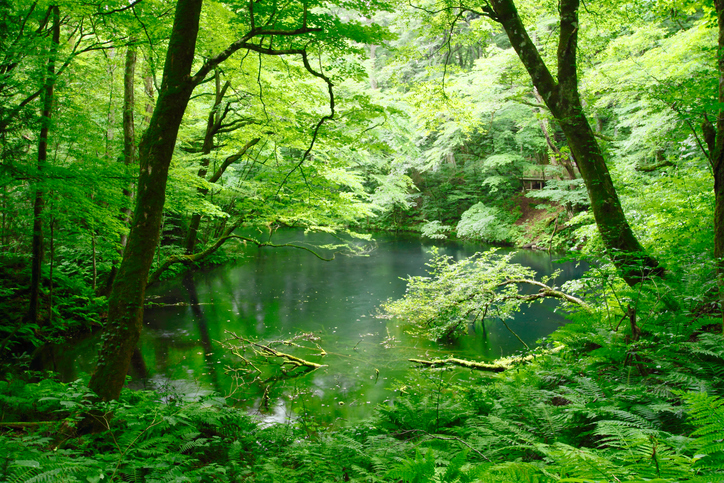
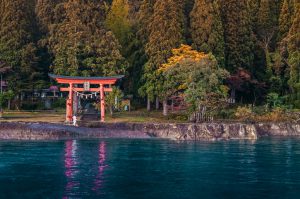
Other attractions for nature lovers in this prefecture include the Shirakami mountain range, which is home to the world’s largest beech tree forest and was also declared a UNESCO World Heritage Site, the Lake Tazawa (Tazawako), the deepest lake in Japan at 423 metres. A caldera lake with an air of mystery surrounding a large crater.






